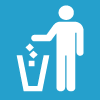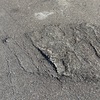Description
The last city letter to residents, dated September 29, 2020 stated the following, regarding Harbor Isle Lake:
"[Copper algaecide] applications are expected to be monthly or as needed for the next few months as they observe and test lake conditions."
- October 2020: there was blue-green algae again but no further? treatments or city updates
- November 2020: there was blue-green algae but NO treatments or updates
- December 2020: there was blue-green algae but NO treatments or city updates
- Majority of January 2021: there was/is blue-green algae still but NO treatments or updates
Source:
https://sites.google.com/view/harborislelakejournal/Harbor-Isle-Lake-Blue-Green-Algae-Photos
Yesterday, on January 20, 2021-- There was one solitude lake management boat spraying a blue liquid onto the lake. Please confirm that this is the same copper algaecide, as listed in the September 2020 city letter, and verify the " quantity " sprayed onto the lake and the locations of treatment. There was no notification of this spraying to residents-- and the City again has failed to follow their past statements and plans, without any explanation or updates to the condition of the lake-- despite its consistently documented toxic dire state-- specifically regarding toxic blue-green algae blooms-- which are the same frequent and ongoing occurrence since 2018 and what the city is supposed to be "resolving".
What lake conditions are being observed and tested? The 1 sample point for the lake in the Solitude Lake Management's monthly reports is not adequate and has been reduced from 3 prior sample points for data gathering to only 1 since April 2020.
So, how is less data allowing for better observations and testing?
The city, however, requested 3 sample sites in their own secondary testing contract-- which the results of, have now been received by the city since November 2020, yet they have provided no further info to all residents on these conclusions which stated, among others, to investigate the lake's sediment.
The photo, above, illustrates the neighborhood entrance the day of this treatment and the day after (today). There is no visible difference and there is a strong noxious mixed odor from the algae (which has been occurring for weeks) along with the chemicals used.
Why is the city deliberately not informing people of what is going on and continues to sit in waiting on this? Only to again resort to these temporary visual "band-aids", which seem to be lessening in effectiveness anyway? This is not solving the lake's problems and the city continues to fail to make any additional efforts.
This is not stopping the toxic blooms from growing. Why are the other methods of directly addressing nutrients and water quality being ignored, as stated in prior complaints here from people and in ongoing emails? There are ways that can be tried to manage and limit the nutrients for these blooms...
Stop ignoring these suggestions, the data, the concerns, and making excuses. There is no excuse after years of this.
1.) Adding beneficial bacteria as a treatment to the micro-bubble aeration to aid in the micro-bubble system's effectiveness.
2.) Adjusting and improving the efficiency of the micro-bubble aeration system installed in June 2020 -- by means of analyzing nutrient run-off input loading, sediment leeching, BGA build-up locations, lake morphology, and other factors alongside info previously mentioned/ emailed to City personnel.
3.) Keeping the properly designed micro-bubble aeration system as a permanent running solution to mitigate future lake events and to keep the lake healthier. Just as nearby Renaissance Neighborhood has had since 2016, which the City approved/helped fund.
4.) Removing the conflicting, higher cost, and unproven nano-bubble system and replacing it with more micro-bubble diffusor heads, if needed.
5.) Investigating / testing the lake's sediment & fill material for nutrient loading and leaching into the water body.
6.) Dredging the lake's sediment & fill material, if a properly designed micro-bubble aeration system is still not at its most effective due to possible extreme sediment leaching from the City approved fill project in 2001.
7.) Clearing out invasive cattails to improve lake access, reduce nutrient load, and to reduce the likelihood of toxic blue-green algae being trapped and its toxic dust residue from becoming airborne -- especially at the city's easement and access points, like at the public neighborhood entrance.
8.) In addition to the U.S. mailed letters, a creation of public web-page that allows City statements, data, and any other pertinent information to be posted about Harbor Isle Lake and its situational analysis. So, any interested party can better understand what has been going on or what is being planned.







1 Comment
Customer Support (Verified Official)
This issue has been marked as a duplicate of issue 8954408.
If you are already receiving notifications regarding this issue,
you will now receive updates regarding issue 8954408.